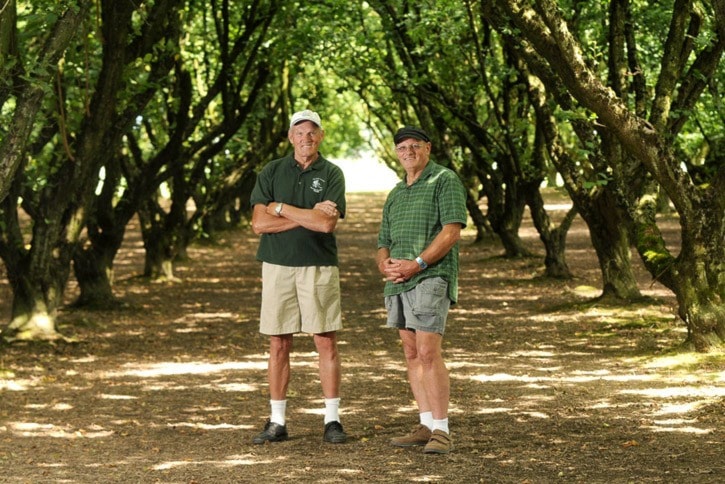A wind-born disease is wreaking havoc on Chilliwack's hazelnut orchards.
When the eastern filbert blight (EFB) first appeared on a farm in Yarrow in 2008, the BC Hazelnut Growers Association hoped they could slow down the spread. But just four years later most orchards in the Chilliwack, Yarrow, Rosedale and Agassiz areas have been infected.
"Our whole industry is on the verge of being eliminated," said Peter Andres, president of the BC Hazelnut Growers Association.
In Chilliwack, that accounts for more than 35 growers, 800 acres of hazelnut trees, two manufacturing plants, and countless livelihoods.
But there's hope.
The BC Hazelnut Growers Association is hosting a field day on Aug. 23 to discuss EFB and the new trial trees it believes could save the industry.
The association has partnered with Oregon State University, which developed the trial varieties, to grow in Fraser Valley soils. In Oregon, the trees are 99 per cent resistant to EFB.
"As an association, we're trying them in our soils to make sure they're as successful here as they are there," said Andres.
EFB is not a new disease. It devastated the hazelnut industry in Oregon in the 1980s, and as a result the borders were closed to hazelnut trees in an effort to confine the blight to the south. But because EFB spores are spread by wind, it was only a matter of time before it would make its way to the Canadian side.
In 2002, an orchard in Abbotsford was found with EFB. In 2005, orchards in Langley were heavily infected. And in 2008, the Yarrow orchard had been hit.
"We're right in the wind path of Oregon," said Helmet Hooge, who first spotted the infection on his six-acre farm three years ago.
"The spores can easily travel 30-40 miles in just a few weeks."
And while an infected plant won't exhibit the most common symptom of black pustules on the stems for up to 18 months, the disease will take effect right from the get-go, essentially strangling the tree of all nutrients.
"You have to be looking very carefully," said Andres, who regularly climbs his trees throughout the year on the lookout for brown leaves, dead limbs, trees not producing pollen – all signs of EFB.
"It's like a human cancer: it's there, you know it's there, but you can't see it yet."
Within four years of infection, the tree will be dead.
"I can see in five years a fair number of our orchards are going to be leveled," said Andres.
But if successful, the new varieties, which include Jefferson, Yamhill and Sacajawea, could rebuild the industry into a better industry.
In Oregon, these trees were shown to produce good sized crops within 7 years, and twice as much as the older varieties within 10-12 years.
"We've been looking for better trees that produce less tree and more nuts for years," said Andres. "These varieties are going to produce more meat, a better nut, at a better price and will hopefully improve the industry over the long term."
The BC Hazelnut Growers Association field day is on Aug. 23 at Canadian Hazelnuts in Agassiz at 3 p.m.
For more information, email hazelnuts@shaw.ca.
